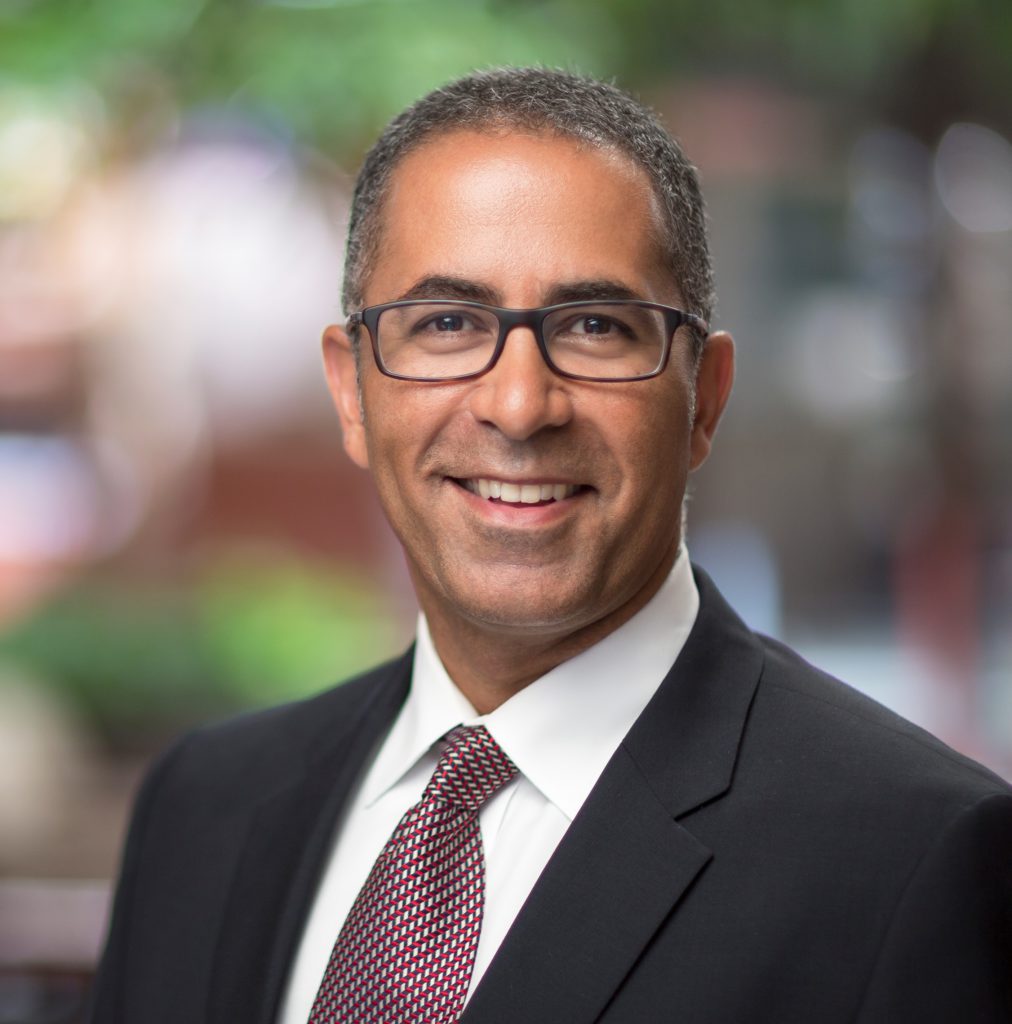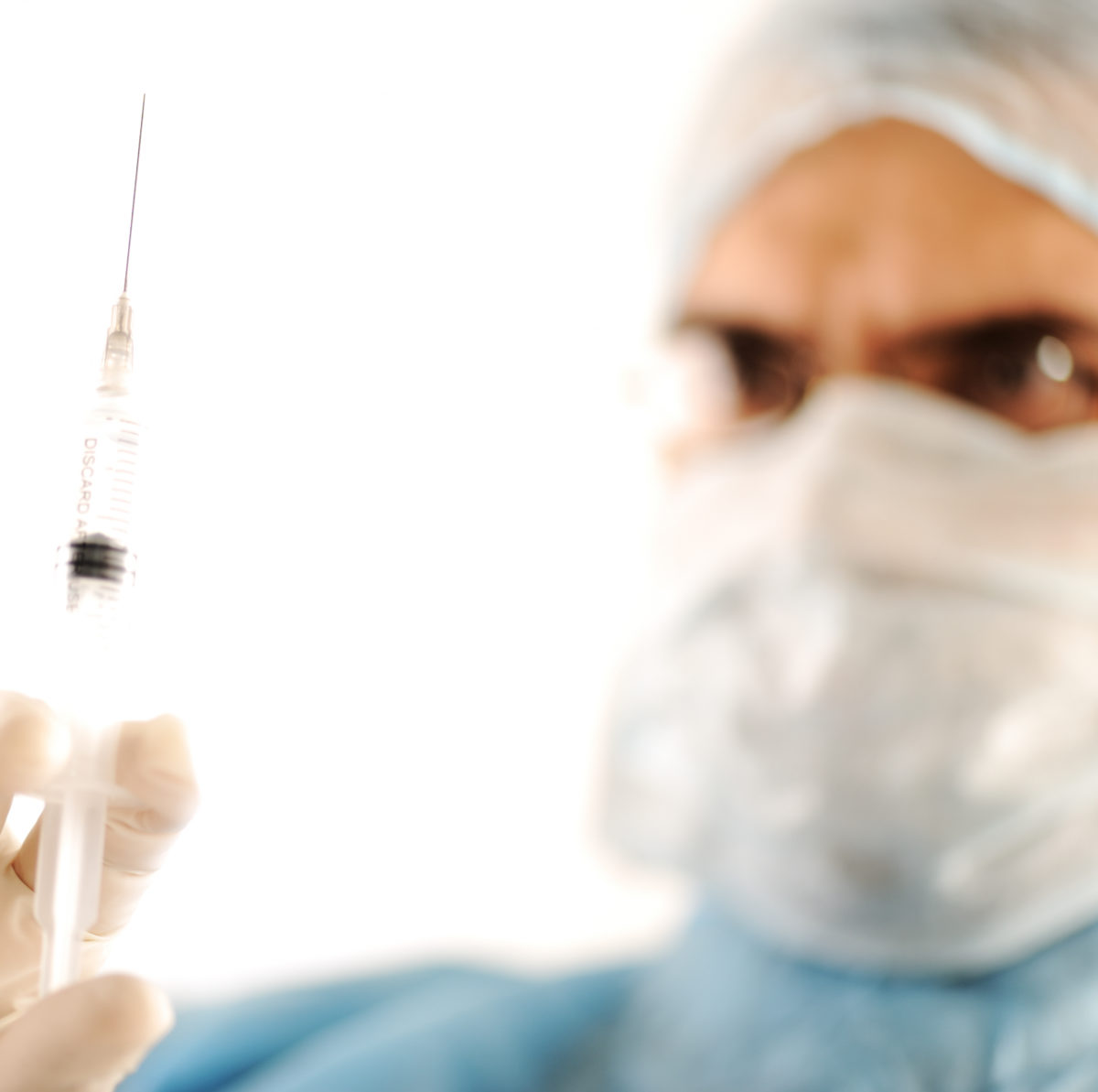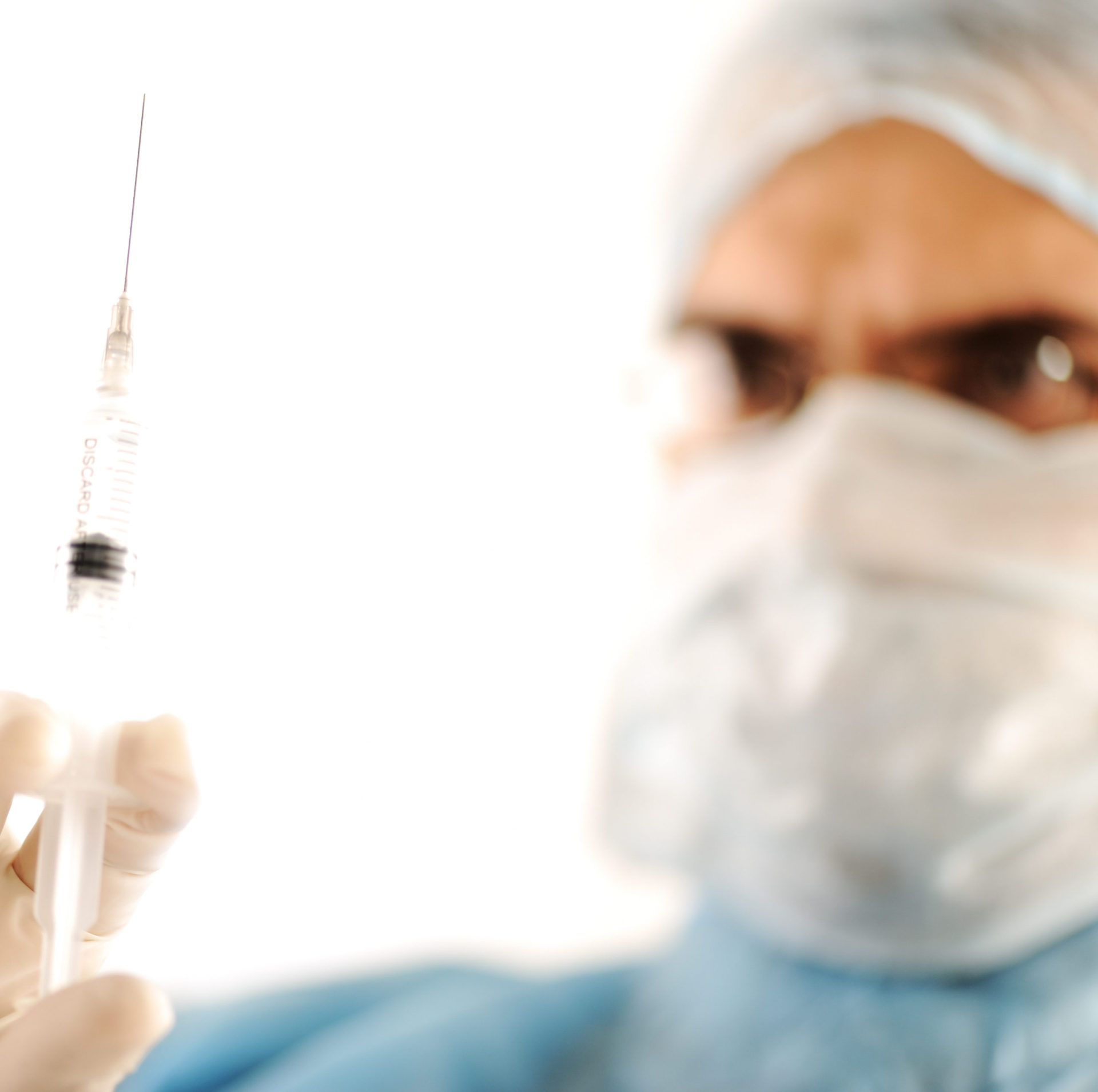Immunotherapy for Multiple Myeloma
A Conversation With Joseph Mikhael, MD

In this segment on the American Society of Hematology (ASH) 2021 conference, Dr. Joseph Mikhael describes emerging immunotherapy in multiple myeloma, including CAR T-cell therapy and bispecifics.
The interview has been edited only for clarity.
Bispecifics
The Patient Story: Bispecifics and CAR T-cell therapies have been huge topics. Can you give us some of the highlights?
It’s a huge area. And this is one of the reasons why I’ve said I’m so excited about what’s happening in research in myeloma. There are lots of things coming for what we typically call triple class refractory myeloma.
So when people have been exposed to, and their diseases grown on, the three current major classes of drugs -proteasome inhibitors, immunomodulatory drugs and monoclonal antibodies- we’re looking for more options. We have some options now, like selinexor, or like belantamab mafadotin, but we want more options.
This is where a lot of the hot research is going on, and probably the biggest group of studies we saw at ASH were these bispecifics. What do I mean by bispecific?
We use that word generically because it’s a drug that has two arms. Bi, meaning two. So with one arm, it hooks on to the myeloma cell, typically by virtue of something that’s sticking out of the cell. And then the other arm engages or reaches out to a local immune cell of the body, typically a T-cell. Although now we’re starting to do research looking at other cells like natural killer cells.
But for now, they’re T-cells, and it immediately engages the T-cell to help destroy the myeloma. The real benefit of these drugs is this is just a drug we give to a patient, as opposed to CAR T-cell therapy, which is also very exciting.
In CAR T-cell therapy, I have to take a patient’s T-cells out, I manufacture them, I multiply them, and then I give them back to a patient a month later. There are a lot of logistical challenges in doing that. And so this is kind of an off the shelf approach where I can just take a drug off the shelf and give it to a patient.
The bispecifics in general are pretty much double that. We’re seeing 50 to 60 and even up to 70 percent with all of these different bispecifics.
Dr. Joseph Mikhael
What did we learn about bispecifics at ASH 2021? We learned that in general, we’re seeing a doubling of the response rate of what we’ve seen so far in this phase. So we’ve seen great drugs like selinexor and belantamab, and even this new drug, iberdomide -which is not yet FDA approved, just kind of a newer version of the immunomodulatory drugs called cell mods- and these drugs have historically had a response rate of 25 to 30 percent.
The bispecifics in general are pretty much double that. We’re seeing 50 to 60 and even up to 70 percent with all of these different bispecifics. Point number two is that they’re different because they can hook on to different things on the tumor.
We’ve historically looked at something called BCMA -or B cell maturation antigen, something that sticks out of a myeloma cell- that we can grab onto with one of these two arms. But now we have two new targets, one of them is called GPRC5D, and one of them is called FcRH5.
I think they sound like license plates– the first time I heard these drugs, I drove to the grocery store and I was convinced the car in front of me had GPRC5D plates. But the bottom line is that there are different ways to use bispecifics.
Side effects
The Patient Story: What about side effects?
The third thing we’ve learned is that they do come with side effects, and we have to be careful. Specifically, this thing called cytokine release syndrome, or CRS, where the body is reacting to this because we’re playing with people’s immune systems.
Thankfully, almost across the board with the bispecifics, we see a much lower grade and severity of CRS than we do with CAR T-cell therapy. We’re still admitting patients for their first dose or two, depending on the rates of seizures. But I can see a day in the future where we may be able to give this as an outpatient.
So, this is a really exciting time for bispecifics. There are different bispecifics. They’re clearly very effective. We’re understanding their toxicity or their side effect profile. For some, it’s pretty much just low blood counts. For others, it’s a bit more involved. Some of them have effects on the taste or the skin or even people’s nails. And obviously we’re evaluating all of these in the clinical trial.
This is not way off in the future. It’s quite possible that in 2022, we will likely see one of these drugs.
Dr. Joseph Mikhael
The last thing I would say about the bispecifics is that this is not way off in the future. It’s quite possible that in 2022, we will likely see one of these drugs. The one that appears to be furthest advanced is now a drug called teclistamab, which hooks on to the BCMA and the T-cell, may well be available by mid-to-late 2022.
I don’t want to, again, be prophetic and think to the future, but teclistamab, talquetamab, and various others are in the pipeline now, and we hope to have them available to our patients in the not-so-distant future.
CAR T-cell therapy
The Patient Story: What’s the most exciting takeaway from ASH regarding CAR T-cell therapy?
So with CAR T-cell therapy, if I go back to what I described before just using very general numbers, we saw response rates with these simple molecules or the single molecules of 25 to 30 percent. We appeared to be doubling that when we started using bispecifics. We’re tripling that when it comes to CAR T-cell therapy.
We already have one CAR T approved in the form of Ide-cel. And depending on how we look at those numbers, somewhere around three quarters, if not even up to 80 percent of patients, will respond to that and will respond for a long time.
We could argue that one of the most exciting abstracts from this year was the update in the next CAR T that will likely be approved, called Cilta-cel, through a study that was called the CARTITUDE-1 study.
My good friend and colleague Tom Martin presented this from UCSF, and it’s remarkable. I mean, there’s a 98 percent response rate. There are only two patients that didn’t respond. And even at that, there’s a question about how those two patients are doing.
It’s hard to make a hematologist’s jaw drop, but we were really quite struck by this. Obviously, there was some cytokine release syndrome and some challenges, but, generally speaking, they were manageable.
What was almost equally impressive about the CARTITUDE-1 study was not just that the response rate was at a level that we’re not used to -and that the depth of that response was incredible as to how many people achieved minimal residual disease negativity- but how long it lasted– that the median progression free survival has still not been reached at two years. So it looks like these people will stay in remission for two years.
It’s hard to make a hematologist’s jaw drop, but we were really quite struck by this.
Dr. Joseph Mikhael
That’s something that we just absolutely have not seen before. Most of these patients on the CARTITUDE-1 study, if they were not being given CAR T, sadly would likely have succumbed to their illness within six to nine months. So for them to be able to live that much longer is very gratifying.
Again, it’s still too early. It’s not FDA approved yet. The FDA will be reviewing this in February, but I suspect we may likely have another CAR T available to us in 2022, and we hope that we can treat more patients with it.
Risks of CAR T-cell therapy
One of the encouraging things about CAR T actually is that we seem to have more inclusiveness than, let’s say, even bone marrow transplants or stem cell transplants. So in the Ide-cel study, there were patients who were older and had co-morbidities that may not have made them eligible for transplant, but they made them eligible for CAR T.
Right now, some of the challenging areas are patients who are significantly elderly with many comorbidities. We don’t make determination just by age, of course. Right now, because of some of the drugs that we give to people to prepare them to receive their T-cells back, if people have very advanced kidney dysfunction, that’s unfortunately a bit of a dealbreaker for many, although we’re starting to evaluate that a little bit more.
The biggest issue is access, and it’s not just access because patients have to go to a larger center. Even getting the already FDA-approved CAR T is challenging because the whole supply chain across the world is an issue.
The viral vector technology that’s used to engineer CAR Ts is similar to that used in vaccinations, actually, and so there’s a bit of a shortage and a supply challenge. Most of this will be resolved in the spring. But right now, there are people who want to get CAR T that can’t. And that’s why having another product, we hope, will facilitate access.
Looking ahead in myeloma
Optimism for future treatments
The Patient Story: Anything else you would say to people and their families who are on their second to last option and getting nervous? How should they respond to all this news?
You’re not going to find a more optimistic myeloma doctor in the country than me because it does excite me to see all of these options.
Dr. Joseph Mikhael
As I always say, I’m the realistic optimist. I use that phrase a lot in the clinic. You’re not going to find a more optimistic myeloma doctor in the country than me because it does excite me to see all of these options. I have a patient this week who I’m treating on clinical trial with a very new bispecific that doesn’t even use a T cell, it uses a natural killer cell. So the options are extensive.
The realistic part is they’re not always available right away, and there are people that have very advanced disease. And so we do encourage people to get an expert opinion to have the openness, and to look at different options.
Sometimes we can reuse drugs that were available before. But there is true optimism about bispecifics and CAR T being much more available within the next year to two years. And I really think it’s going to have a prolific impact.
And as we look to the future, we’re now going to start -and we already are- doing clinical trials bringing this much earlier to within the disease course. As I shared with you earlier, this trend in myeloma to treat most effectively early on is really important. No, don’t save that best for last. So if CAR T works that well when everything else is failed, maybe CAR T works even better in the front line or the early relapsed.
Inequality in myeloma care
The Patient Story: What would you say is happening in the myeloma space regarding health care inequities and making sure that we address all the different needs?
So I’m just thankful that we’re finally, in a greater community sense, shining a spotlight on health disparities– in particular in multiple myeloma, and in particular within the African-American community, although there are other disparities within the Hispanic community and many other places. But specifically within the African-American community, because as we mentioned earlier, the disease is twice as common.
And this is a lot of the work that I do at the IMF with the M-Power Project, where we’re really trying to do a deep dive in the community to raise awareness around this condition and facilitate earlier and more accurate diagnosis because African-American patients typically have a longer time from symptom initiation to diagnosis than Caucasian patients.
At this year’s ASH, I was encouraged to see that there were a whole host of studies that were done that are helping us to diagnose the problem further, that are demonstrating the connection between socioeconomic status and outcomes of myeloma, that there is sadly decreased access that African-American patients.
For example, one of the drugs we talked about, daratumumab, there’s a great Canadian study showing that African-American patients tend to get it much later in the disease course than Caucasian patients. Or that when we look at the big pivotal clinical trials, as we call them, that have influenced approval over the last several years, there have been very few, unfortunately, African-American patients in those studies.
If we figure that about 20 percent of all myeloma patients in this country are Black, why is it that our clinical trials have two, three, four or five, maybe six-seven percent enrollment within the African-American community? And this was discussed during the meeting in various settings and contexts and even access to CAR T.
If we figure that about 20 percent of all myeloma patients in this country are Black, why is it that our clinical trials have two, three, four or five, maybe six-seven percent enrollment within the African-American community?
Dr. Joseph Mikhael
So I always talk about the three Ts: access to triplets, transplants, and trials. We’ve shown this has not been at pace with Caucasians for the African-American community. But at this ASH, we heard that similarly, unfortunately, in CAR T, a fourth T -so triplets, transplants, trials and CAR T- are not as accessible.
On the other hand, there were some studies that started to look at greater inclusivity in ranking, in prognostic scoring, and in ways to look at clinical trial sites– for example, in areas where historically we’ve not had clinical trials. If we do the clinical trials in the same places we’ve always done them, they may not be as accessible to various members within the community, including the African-American community.
So, you know, I think we need to diagnose the problem fully before we do something. On the other hand, it’s time to do something, and I believe that the community is starting to do something, and we’re starting to appreciate the importance of doing this.
This is a time of great optimism… I always say I don’t treat myeloma, I treat people.
Dr. Joseph Mikhael
We’ve let people be at risk for too long. It’s going to involve all stakeholders from the policy standpoint and government, from within the medical community, within industry, in the way they conduct clinical trials and set expectations of enrollment in clinical trials and indeed in the lay community as we work together to overcome this inequity in these health disparities.
This is a time of great optimism. This is still a very awful disease. I hate myeloma. I always say I don’t treat myeloma, I treat people. And so we want to do everything we can for those wonderful people who unfortunately have been afflicted with this disease, and we’ll do the very best we can for them.
Emerging Therapies
Dr. Joseph Mikhael discusses exciting advances in multiple myeloma treatment, including bispecifics and CAR T-cell therapy.
3-drug vs. 4-drug combinations
Multiple myeloma expert Dr. Joseph Mikhael discusses the use of 3-drug vs. 4-drug combinations for front-line treatment.
Multiple Myeloma Screening
Dr. Joseph Mikhael discusses exciting advances in multiple myeloma screening, including new information from the iSTOP and PROMISE clinical trials.



